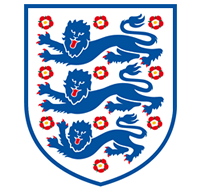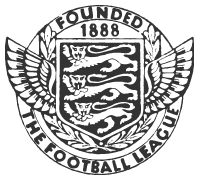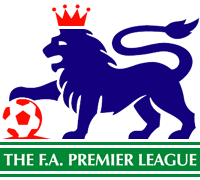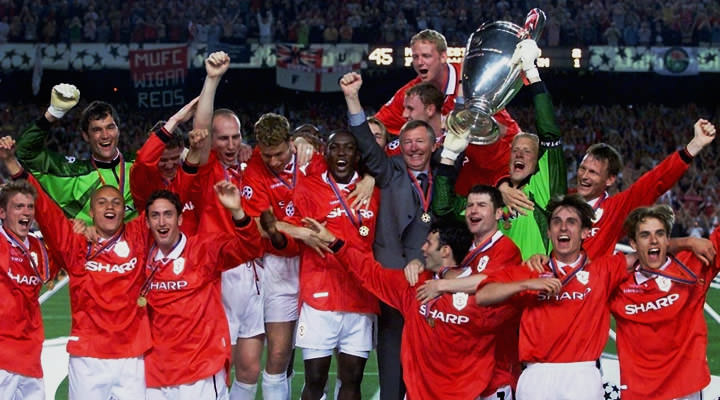Football Becomes Big Business
Football is often regarded as the people’s game but it was in public schools and universities that the modern game was developed. A game that can trace its roots as far back to the fourteenth century where opposing villages and towns battled over an inflated bladder, fighting and maiming each other as players raged through the streets. The nineteenth century saw games with rudimentary sets of rules regarding taking and attacking opposing villages territory – these being the ‘goal’. The industrial revolution, the formation of a police force and the shift of people into the cities saw the end to these games.
 They remained in the privileged and cocooned world of the public school system however, and with the reforms brought in by headmasters the game became toned down and regulated. Football was seen as a method of encouraging sportsmanship and teamwork. It was here that The Football Association (The FA) was formed in 1863 as a means of creating a standard set of rules. It was a firmly amateur organisation that believed in the game being played for the competition and the sport alone.
They remained in the privileged and cocooned world of the public school system however, and with the reforms brought in by headmasters the game became toned down and regulated. Football was seen as a method of encouraging sportsmanship and teamwork. It was here that The Football Association (The FA) was formed in 1863 as a means of creating a standard set of rules. It was a firmly amateur organisation that believed in the game being played for the competition and the sport alone.
Professionalism
Graduates from the universities, as well as churches and schools promoted the sport, as it would encourage physical health and moral values. The game caught on massively with clubs sprouting up across the country – especially in the North and Midlands. As the game popularised and competition increased between clubs, illegal payments started to be made to players. In 1885, and against its beliefs, the FA was forced by threat of a breakaway to legalise professionalism, but in doing so it continued to regulate the excesses and protect the game from the effects of commercialism.
 Now that clubs were able to pay players, they needed regular fixtures in order provide an income. It was with this in mind that William McGregor of Aston Villa formed the Football League in 1888, starting with 12 clubs. From the start, the league thought it important to maintain equity between the clubs that played in it. Gate receipts were shared between clubs that meant the bigger clubs couldn’t dominate just because they could make more money through the gates. Later a four percent levy of overall gate money was collected into a central pot and shared equally between the clubs. Another action that maintained equity between clubs was that of a maximum wage. However this is now seen today as a restriction by the upper class FA on the working class players, and was eventually scraped in 1961.
Now that clubs were able to pay players, they needed regular fixtures in order provide an income. It was with this in mind that William McGregor of Aston Villa formed the Football League in 1888, starting with 12 clubs. From the start, the league thought it important to maintain equity between the clubs that played in it. Gate receipts were shared between clubs that meant the bigger clubs couldn’t dominate just because they could make more money through the gates. Later a four percent levy of overall gate money was collected into a central pot and shared equally between the clubs. Another action that maintained equity between clubs was that of a maximum wage. However this is now seen today as a restriction by the upper class FA on the working class players, and was eventually scraped in 1961.
Professional football continued to thrive, and by 1921 the Football League had four divisions. Clubs did make money, but in an amateurish way. The majority of a clubs income was from that of admission charges and that made by in-ground catering. Clubs outgoings were spent on player’s wages (which were capped) and so little money was spent on grounds, which remained basic.
Whilst the amateur FA governed the game and ran the national team, the professional Football League was merely a competition registered with The FA that ensured clubs had regular fixtures. Both organisations maintained a largely harmonious relationship, with William Pickford, President of the FA between 1937-9 stating:
The power of the league strengthens the Association and the authority of the Association safeguards the league
This relationship was to deteriorate after the Second World War with the breakdown of the class system. As the upper class FA began to waver, the Football League became more powerful, and arguments between the two became more common – club versus country often being a catalyst.
Breakaway
The re-distributive nature of the Football League (matched by the maximum wage) ensured the safeguarding of every club. Very few clubs went out of business over the course of a century, and these measures alongside The FA’s Rule 34, ensured the games popularity and survival. The sixties saw the first signs of sponsorship and television entering football. Whilst the bigger clubs were more attractive to sponsors and likely to attract a greater number of TV viewers, the Football League maintained its re-distributive structure meaning all revenue was shared equally among 92 clubs.
In 1965, the BBC paid £5,000 for its Match of the Day highlights and each club received little more than £50 as a result. As money grew with the success of the game, resentment came from bigger clubs, most headed with a new breed of chairman not keen on having to share the wealth with the smaller clubs. The first threats to the structure of the league came during the 80’s. Threats from ‘the big five’: Manchester United, Liverpool, Tottenham Hotspur, Everton and Arsenal to form a breakaway ‘Super League’ lead to concessions being given by the smaller clubs with more money and voting rights given to bigger clubs. The gate levy was also reduced to 3% with home clubs allowed to keep gate receipts. 1988 saw a private deal made between the big five and ITV to get themselves shown almost exclusively on TV. However there remained an element of redistribution: Division One received 50%, Division Two received 25%, with the remainder shared between the Third and Fourth Divisions.
The Hillsborough Disaster
The 15th April 1989 and a semi-final FA Cup clash between Liverpool and Nottingham at Hillsborough was an unfortunate turning point in the history of English league football which saw 96 Liverpool supporters crushed to death.
The ensuing Taylor enquiry was to find in its interim report that their was an appalling record of safety management at Sheffield Wednesday, failure by the local council in its safety regulatory duties and mismanagement of the crowd on day by South Yorkshire Police. However there was no change of staff at Hillsborough, and no memorial erected until 10 years after the disaster. The chairman who presided over this policy later became the chairman of The FA Premier League. Lord Taylor’s final report:
recommended grounds should be made all-seater,
proposed reducing pools tax, with savings passed onto the Football Trust who could then award grants,
stated rebuilding should not be an excuse by the clubs to raise ticket prices,
believed the League and FA both failed to regulate clubs effectively in terms of fulfilling safety duties,
found the ethos of public service in the boardroom being widely betrayed. Chairman and directors were more interested in power struggles and share dealing than their clubs supporters,
called for the fullest reassessment of the policy for the game.
The government however only enacted on the all-seater requirement and the giving of public money in the form grants to fund the rebuilding of grounds. Grants of up to £2 million per stand were given to the very directors criticised in report who went against the reports recommendations, and systematically increased their ticket prices. These new stadiums lost their atmosphere, and became notably bland and faceless. Clubs tended to insist on supporters staying seated though this was not a requirement by law. These new grant funded stands were also used as an opportunity to install corporate boxes, as well as banqueting and conference facilities. As for the families affected by the disaster, they received no financial support and out of the whole horrible episode undoubtedly finished the worst off, achieving no justice for their loved ones.
Premier League Formation
As its response to the disaster and answering Lord Taylor’s call for a full reassessment of the game, and anticipating the forthcoming TV deal, the Football League published One game, One Team, One Voice. It recommended:
FA and League should bury the differences that had grown between them, and become a single authority,
a new 12 man board formed at The FA (in place of The FA Council) with six members from each organisation,
the new FA would run the whole spectrum of football; amateur and professional, from top to bottom for the good of all,
TV deals would be done for the whole of football, money distributed according to needs of running a healthy game.
It was around this time that Rupert Murdoch’s Sky satellite television system had been launched in the UK, but with nothing to tempt viewers, it was a tremendously under subscribed and close to going bankrupt. It knew only football could attract viewers, and was prepared to spend big in order to attract the sport to the platform. Such lucrative offers made a breakaway from the money sharing Football League far more tempting and it wasn’t long before the ‘big five’ chairman met in secret with Greg Dyke (then at LWT) who agreed to buy TV rights if they were to form a breakaway ‘Super League’. But if they were to gain credibility for the breakaway they would need the backing of The FA.
The Football Association at this time was preparing its own response to Hillsborough – its Blueprint for the Future of Football published in 1991. It saw unity as a threat to its administrative pre-eminence and so supported the formation of the breakaway league as a means of self-preservation that would also deal a fatal blow to the Football league. The report in essence:
no longer protected football from commercialism,
believed football should move upmarket to ‘chase more affluent middle class consumers’,
saw The FA as pre-eminent in football administration,
backed Super League proposal in the form of an 18-member Premier League tied to a system to promote excellence, that would ultimately lead to success for the England team.
 So 1992 saw the first games being played in The FA Carling Premiership. However, with all the former Division One clubs realising the benefits of Premiership membership, all 22 First Division clubs resigned from Football League. This was against the FA’s proposals as a greater number of teams meant more games – detrimental to the national team and promotion of excellence. It could of forced the membership of only 18 clubs, but decided not to bother. However, the number of clubs was later reduced to 20.
So 1992 saw the first games being played in The FA Carling Premiership. However, with all the former Division One clubs realising the benefits of Premiership membership, all 22 First Division clubs resigned from Football League. This was against the FA’s proposals as a greater number of teams meant more games – detrimental to the national team and promotion of excellence. It could of forced the membership of only 18 clubs, but decided not to bother. However, the number of clubs was later reduced to 20.
They shared the £305 million bid by Sky (which outbid Greg Dyke and ITV) between them, with the only concessions to the Football League being £3 million in compensation and allowing clubs to be promoted to and relegated from the Premiership. Clubs that were relegated would receive ‘parachute payments’. The following TV deal in 1997 saw £607 million paid, and last deal in 2001 saw a massive £1.6 billion paid out.
Redistribution
Just as enough money was coming in to fund a reform of the whole of football, from the Premier League to the grassroots and in between, the system of redistribution had ended. Not only that but wage inflation soon moved down into lower divisions, players believing they should also have their wages increased at the same scale as that of players in the top league. But the lower leagues did not have the same sort of revenues to support them and many semi-professional clubs soon found themselves in trouble.
As for the grassroots of the game, where tomorrows players are to be found, there was considerable neglect. Playing fields became victim to local authority cuts – either finding themselves in states of disrepair used for housing and industrial developments. These cuts also affected school leagues, and even when they produced Premiership footballers, the money didn’t filter down – Manchester United paying only £100 to Manchester Schools FA when Nicky Butt was signed to them.
Government Reform
1997 saw the country elect a new Labour government who recognised that commercialism was damaging football. It set-up a task force to enquire into various issues affecting the game formed by supporters, governing bodies, public figures and informed academics. This mix sometimes meant it was hard to achieve consensus, especially with members of the Premier League. The task force produced four reports:
Eliminating Racism from Football
Published on March 30th 1998, this report lead to racist chanting being made criminal offence.
Improving facilities for Disabled Supporters
Published on July 29th 1998, this report ensured disabled facilities were now compulsory at all grant-aided ground developments.
Investing in Community
Published on January 11th 1999, this report lead to two bodies being formed:
Supporters Direct – A government backed initiative set up with £750,000 budget that would encourage supporters to buy and hold football clubs shares mutually.
Football Foundation – A body to administer spending of 5% of the Premier Leagues TV revenue (£80m over 3 years) matched by lottery grants, to spend on grass roots football facilities.
Commercial Issues
This area of enquiry reported back on December 22nd 1999, but with little agreement between various parties lead to two separate reports being produced. The majority report favouring an audit commission and ombudsman but football’s governing bodies unsurprisingly preferred a system of self-regulation. The government facing pressure from the Premier League supported this report which led to the creation of the Independent Football Commission (IFC). This body would oversee the running of football in commercial areas such as ticket prices and merchandising, but only with the power to ‘name and shame’ bad practice.
Football Foundation
 The Football Foundation was formed in 2000 by the Government, replaced The Football Trust. It has a 53m investment programme with money sourced from The FA Premier League, The FA, Sport England and the Department of Culture, Media and Sport (DCMS). The foundation – the UK’s biggest sporting charity – is based at FA Headquarters in London. It aims to deliver:
The Football Foundation was formed in 2000 by the Government, replaced The Football Trust. It has a 53m investment programme with money sourced from The FA Premier League, The FA, Sport England and the Department of Culture, Media and Sport (DCMS). The foundation – the UK’s biggest sporting charity – is based at FA Headquarters in London. It aims to deliver:
a new generation of modern facilities in parks, local leagues and schools throughout the country,
capital and revenue supporting the running of grass roots football,
strengthening the links between football and the community to harness its potential for a force for good in society,
REFF – Register of English Football Facilities. Database of all football facilities, their state of repair and demand.
Two recent examples of how the foundation has helped make a difference are in Colchester and Burnley. The Colchester United Football in the Community Scheme was given a £11,537 grant to fund to mobile floodlights to provide evening coaching schemes for local young people. This radical project uses the mobile floodlights to take football to local housing estates, and help provide professional coaching opportunities for children. Meanwhile, Burnley Borough Council received a £150,000 grant to fund pitch drainage and construct modern changing facilities at the Prairie Playing fields in the town. The council hopes these improvements will boost participation rates, especially amongst under represented groups.
Future

The future looks likely to see history repeating itself, but this time on a European level. G14 is a group the 14 top European clubs including Manchester United and Liverpool whose ultimate intention is to see the creation of a European breakaway league with the prospects of even greater wealth. The group has already been successful in lobbying UEFA for an expanded Champions League with the threat of such a breakaway.
The thought of a Europe wide league is not looked forward to by the fans, with increased ticket prices, less home games (away games being abroad) and the loss of local rivalries. But it would also see the Premiership become second division, and the football league even less attractive to television revenue. It could be quite likely that at the next round of TV deals, Rupert Murdoch – the only bidder likely to be available, will be pushing for the European breakaway, with the usual bribe of more money for the G14 clubs.